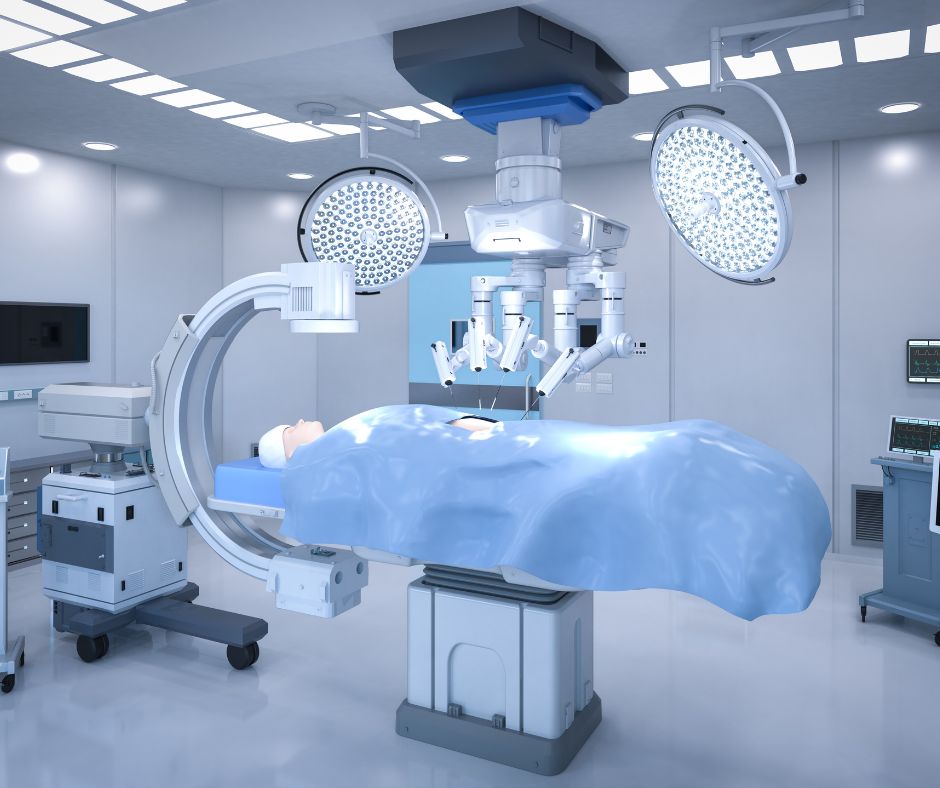Did you know that AI-assisted surgeries can reduce post-operative complications by up to 41%? And that’s just the beginning. Today’s healthcare is getting smarter, and it’s all thanks to artificial intelligence.
Imagine waking up from surgery to find a robot monitoring your vital signs and an AI system crafting your recovery plan. Sounds like science fiction, right?
From personalized rehab plans to virtual reality (VR) exercises, you can use AI to recover from surgery, making healing faster, safer, and less stressful.
Curious about how this tech might help you or your loved ones bounce back after an operation? Let’s dive into five AI tools reshaping post-op care. These aren’t just gadgets – they’re your new health allies, working around the clock to get you back on your feet.
Contents
1. Memora Health

Memora Health has an AI-powered tool that helps create personalized treatment plans for patients recovering from surgery. This software analyzes patient data to tailor rehabilitation programs to each individual’s needs.
Key Features:
- Answers patient questions via text messages (SMS)
- Reminds patients to take medications
- Adjusts treatment based on patient survey feedback
- Tracks long-term recovery outcomes
| Pros | Cons |
| Personalized care | Requires consistent data input |
| Improves recovery rates | May need regular software updates |
| Saves time for healthcare providers | Initial cost can be high |
Use case
A patient recovering from knee surgery uses Memora Health’s platform to get a personalized exercise plan. The software adjusts the plan as the patient progresses, ensuring they’re always working at the right level for optimal recovery.
To learn more, visit:
2. MotionAnalytics

MotionAnalytics is a movement assessment system that uses sensors and AI to evaluate and improve patients’ physical movements during recovery. This technology acts like a virtual movement coach, ensuring exercises are done correctly. It’s commonly used in physical therapy clinics and sports medicine facilities.
Key Features:
- Real-time movement analysis
- Provides instant feedback on exercise form
- Tracks progress over time
- Integrates with other rehabilitation tools
| Pros | Cons |
| Improves exercise effectiveness | Requires specific hardware |
| Reduces risk of re-injury | May feel intrusive to some patients |
| Provides objective data on progress | Learning curve for therapists |
Use case
A stroke patient uses MotionAI during rehabilitation sessions to ensure they’re performing arm exercises correctly, maximizing the benefits of their therapy.
To learn more, visit :
3. Post Op

Post Op is a platform that supports patients recovering from surgery. This system helps healthcare providers monitor patients’ recovery progress and address complications and symptoms. It’s used in hospitals and outpatient clinics to optimize rehabilitation strategies.
Key Features:
- Predicts likely recovery outcomes
- Identifies potential complications early
- Suggests proactive interventions
- Generates easy-to-understand reports
| Pros | Cons |
| Helps prevent setbacks | Predictions may cause anxiety |
| Improves overall recovery outcomes | Requires large amounts of data |
| Assists in resource allocation | May not account for rare complications |
Use case
A cardiac surgery patient’s RecoveryPath analysis suggests a high risk of infection. The healthcare team implements additional preventive measures, successfully avoiding the complication.
To learn more, visit:
4. Koji’s Quest

Koji’s Quest combines VR with AI and game activities to help people who’ve had strokes or brain injuries. Created by NeuroReality, it guides patients through exercises that help them relearn everyday tasks. The program works by using the brain’s ability to rewire itself through new experiences and practice.
Key Features:
- Interactive adventure game
- Customizable options for therapy
- AI-driven difficulty adjustment
- Can use at home on multiple devices
| Pros | Cons |
| Highly engaging for patients | Requires VR equipment |
| Can simulate real-world scenarios | May cause motion sickness in some users |
| Allows for remote therapy sessions | Initial setup can be complex |
Use case
A patient recovering from hand surgery uses VRRehab to practice fine motor skills through virtual games, finding the experience more enjoyable and motivating than traditional exercises.
To learn more, visit:
5. PainSense

PainSense is an intelligent pain management system developed by Milo Creative. This AI-powered tool analyzes patient data to recommend personalized pain management strategies. It’s used in hospitals and pain management clinics to enhance patient comfort and recovery.
Key Features:
- Continuous pain level monitoring
- Personalized medication recommendations
- Non-pharmacological intervention suggestions
- Integration with patient health records
| Pros | Cons |
| Improves pain control | May over-rely on self-reported data |
| Reduces risk of medication errors | Requires regular patient input |
| Promotes alternative pain management methods | Cannot replace human judgment entirely |
Use case
A patient recovering from abdominal surgery uses PainSense AI to manage their discomfort. The system suggests a combination of medication timing and relaxation techniques, leading to better pain control and reduced reliance on opioids.
To learn more, visit:
Conclusion
AI tools are making a difference in post-operative care. They’re not just making recovery faster – they’re making it smarter and more personal. But remember, it doesn’t replace human care. It’s a team effort between you, your doctors, and these smart systems.
If you or someone you know is facing surgery, ask your healthcare provider about these AI tools. They might not have all of them, but even one could make a big difference in recovery.
In the end, the goal is simple: to help you heal better and faster. With AI lending a hand, that goal is more achievable than ever. Here’s to a future where recovery is smoother, quicker, with maybe even a little high-tech fun.

